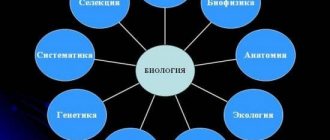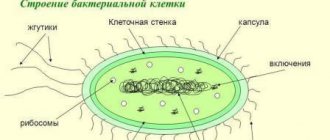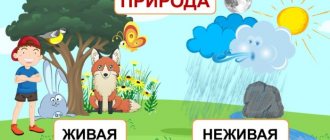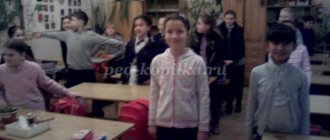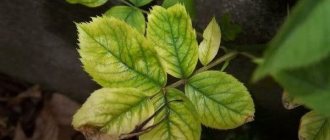Diversity of living organisms: mushrooms
Not all adults know that mushrooms are not plants, but a separate kingdom of living organisms, which include about 100,000 species. The fact is that mushrooms cannot be classified as either plants or animals. They exhibit characteristics of both groups.
Several signs of fungi that are characteristic of plants:
- Immobility. That is, plants cannot move
- Constant growth
- Saturation of cells with beneficial substances through absorption
- All cells are enclosed in a membrane
Variety of living organisms, mushrooms, characteristics:
- Lack of ability to photosynthesize
- Presence of chitin in cells
- A substance called glycogen is used for nutrition.
- Mushrooms can feed in various ways, because among them there are saprophytes, parasites, and symbionts.
- They reproduce mainly by spores, buds and division of the mycelium. Mushroom respiration is carried out using oxygen, which is absorbed by the mycelium.
Mushrooms
Development of a biology lesson on the topic: “Diversity of living nature”; 5th grade
Author: Pupysheva Victoria Viktorovna, teacher of biology and chemistry
MBOU "Secondary School No. 15"
Krasnoturinsk
2015
Technological map of a biology lesson in 5th grade
on the topic: “Diversity of wildlife”
The purpose of the lesson:
formation of knowledge about the classification of living organisms, their diversity.
Lesson content components:
knowledge about the world, experience in implementing methods of activity, experience in creative activity, experience in emotional-value attitudes.
Ways to master lesson content:
perception, awareness, memorization; experience.
Teaching methods:
informational-receptive (explanatory-illustrative), problem presentation, partially exploratory, correlation of learning acts with the needs and motives of students.
Forms of implementation of teaching methods:
demonstration, reading problematic texts, example, persuasion, encouraging independence and self-expression, respect for the individual.
Organizational form of the lesson:
introductory lesson
- seminar.
Lesson objectives:
- subject
– define the concept of “taxon”, get acquainted with the Kingdoms of living nature, study the basic taxonomic units (classification of living organisms at different levels of organization), learn to classify organisms into taxonomic groups.
- personality-oriented
— learn to take care of rare and endangered species of plants and animals, to see the beauty and diversity of living nature;
- developing
— develop the ability to work in groups, analyze information, and draw conclusions.
Applications:
- Presentation “Diversity of Wildlife”.
- Tasks for captains.
- Tasks for teams.
Explanations for the lesson.
To conduct the event, students must
Divide into 4 teams of 6-7 people, in each team the teacher needs to allocate a leader-coordinator or “captain”.
The lesson is conducted in the form of a seminar, where teams present mini-projects on given topics ( Appendix No. 3
).
Separate tasks are expected for captains that will help them perform the function of an organizer in a group of students ( Appendix No. 2
).
A presentation is required to hold the event ( Appendix No. 1
)
Lesson plan:
- Organizational moment (1-2 min.)
- Updating knowledge (5 min.)
- Learning new material (20-25 min.)
- Consolidation (6 min.)
- Reflection (2 min.)
During the classes:
- Teacher: Hello, dear guys! Today we have an unusual lesson, and the lesson is a seminar. This means that today you will act as speakers, experts! What does it mean?
(Students define the concepts of “speaker” and “expert”)
- Teacher: So, let's begin! Children, look at the slide and try to formulate the topic of the lesson. What are your options? (Slide No. 2, Appendix No. 1)
(Students formulate the topic of the lesson, as well as the tasks for the lesson)
Teacher: Having listened to your suggestions, we formulate the topic of the lesson: “Diversity of the kingdoms of living nature.” (Slide No. 3, Appendix No. 1)
- Teacher: Guys, what do you think: are living organisms combined into some groups? And if they are combined, then into which ones?
(Students answer the questions posed)
Teacher: You are right, living organisms are divided into groups, these groups are called “taxa”. Taxonomic groups include living organisms that have several common characteristics.
What is the highest taxon called?
(Students answer)
Teacher: Correct, the highest taxonomic group is the Kingdom. What kingdoms of living nature do you know?
(Students answer)
Teacher: Kingdoms of Living Nature 4: Kingdom of Bacteria, Kingdom of Plants, Kingdom of Mushrooms, Kingdom of Animals.
As you might have guessed, each team will represent a certain kingdom of wildlife. (Slide No. 4, Appendix No. 1)
Teacher: During the lesson, I will ask you to fill out the table “General characteristics of the kingdoms of living nature.” At the end of the lesson we will check the correctness of filling out (Slide No. 5, Appendix No. 1).
| Kingdom Name | general characteristics | Examples |
| Bacteria | ||
| Plants | ||
| Mushrooms | ||
| Animals |
Teacher: So, the floor is given to the captain of the first team representing the Kingdom of Bacteria (Slide No. 6, Appendix No. 1).
(The captain speaks according to plan:
the number of species in the Kingdom, the lifestyle of representatives, the method of feeding of representatives, the method of reproduction of representatives, the significance of the kingdom for humans
) (Appendix No. 2).
Teacher: The floor is given to the team representing the Kingdom of Bacteria.
(Students perform according to plan:
Blue-green algae, Lactic acid bacteria, Escherichia coli bacteria, Azotobacter or nitrogen-fixing bacteria, Pathogenic bacteria)
(Appendix No. 3).
Teacher: So, the floor is given to the captain of the second team, representing the Kingdom of Mushrooms (Slide No. 7, Appendix No. 1).
(The captain speaks according to plan:
the number of species in the Kingdom, the lifestyle of representatives, the method of feeding of representatives, the method of reproduction of representatives, the significance of the kingdom for humans)
(Appendix No. 2).
Teacher: The floor is given to the team representing the Kingdom of Mushrooms.
(Students perform according to plan
: Unicellular fungi - Yeast, Basidiomycetes, Ascomycetes, Zygomycetes)
(Appendix No. 3).
Teacher: So, the floor is given to the captain of the first team representing the Plant Kingdom (Slide No. 8, Appendix No. 1).
(The captain speaks according to plan:
the number of species in the Kingdom, the lifestyle of representatives, the method of feeding of representatives, the method of reproduction of representatives, the significance of the kingdom for humans)
(Appendix No. 2).
Teacher: The floor is given to the team representing the Plant Kingdom.
(Students perform according to plan:
Mossy plants, Fern-like plants, Cycad-like plants, Coniferous plants, Flowering plants
:)
(Slide No. 9,10,11, Appendix No. 1, Appendix No. 3)
. Teacher: So, the floor is given to the captain of the first team representing the Animal Kingdom (Slide No. 12; Appendix No. 1).
(The captain speaks according to plan:
the number of species in the Kingdom, the lifestyle of representatives, the method of feeding of representatives, the method of reproduction of representatives, the significance of the kingdom for humans)
Teacher: The floor is given to the team representing the Animal Kingdom.
(Students perform according to plan:
Coelenterates, Annelids, Arthropods, Fish, Birds, Mammals)
(Slide No. 13, Appendix No. 1, Appendix No. 3).
- Teacher: We have become acquainted with the kingdoms of living nature, let's check that your tables are filled out correctly.
(Students check each other - mutual checking)
Teacher: let's conclude -
The world of wildlife is huge, represented by a variety of species, and very beautiful.
- Teacher: What new did you learn? What would you like to know?
(Students answer)
Thank you for the lesson!
Lesson on the topic “Classification of living organisms”
Lesson on the topic: Classification of organisms.
Lesson type: combined lesson
Lesson objectives:
Educational:
- Form the concept of taxonomy, kingdom, species.
- Introducing students to the kingdoms of living organisms.
- Give an idea of the diversity of living organisms.
Educational:
- Develop the ability to classify living organisms
- cognitive processes.
Educational:
Foster a caring attitude towards nature.
Cognitive UUD:
the ability to define concepts and classify objects.
Personal UUD:
ability to maintain discipline in class, treat the teacher and classmates with respect
Regulatory UUD:
ability to organize the implementation of teacher assignments. Develop self-assessment and self-analysis skills.
Communicative UUD
: ability to perceive information by ear, answer teacher’s questions.
During the classes.
- Class organization.
- Checking homework.
B. Life processes in the cell.
B. Irritability.
Find errors in the text: Cell division is preceded by division…… Before cell division begins, the nucleus….. in size and in it becomes clearly visible…….. These cell structures transmit hereditary characteristics from cell to cell. From one cell is formed... In the nucleus of each and from two new cells the number of chromosomes becomes the same as there were in.....
- Updating knowledge, communicating the topic and goals of the lesson.
Tell me, how does living nature differ from nonliving nature?
What features of cells indicate that they are alive?
Name the representatives of living and inanimate nature
Wild berry taste. The ringing trills of nightingales, the smell of ripe gardens, the icy overflow of a spring. The first crunch of snow, Primroses in early April, Yellow leaves and an unfamiliar motif of rain.
When we walk on the street, in the courtyard of our house, in the park or outside the city, we admire the beauty of nature. We enjoy the singing of birds, the buzzing of insects, admiring the trees, bushes and flowers. When we see mushrooms in the forest, we try to determine what kind of mushroom it is, edible or not. You can also imagine animals, the diversity of which is great. But probably few of us have thought that all living organisms that surround us have names, please look at the herbariums that lie on your tables, these are not just plants, not just herbs, but these are organisms that have their own name.
The purpose of today's lesson is to find out what groups scientists divide all living organisms into, how scientists classify living organisms. Lesson topic: Classification of organisms.
- Learning new material
Scientists of antiquity already began to be interested in the problem of the distribution of living organisms into groups, initially there was a classification based on the principle of benefit or harm, for example, poisonous plants and medicinal plants, domestic animals and wild animals. A huge contribution to the development of science that deals with the classification of living organisms was made by the Swedish scientist Carl Linnaeus . ( slide 2)
This scientist is the founder of systematics - the science of classifying living organisms. This scientist did a lot for science: firstly, every living organism began to have a double name, for example, Homo sapiens, secondly, Linnaeus proposed introducing a single classification language - Latin; thirdly, he described more than 5,000 species of plants and 2,000 species of animals.
Currently, scientists know about 2 million species of living organisms.
Some species are somewhat similar to each other, while others are completely different. For example, a raven and a magpie are different species, but they are similar to each other. ( Slide 3, 4)
Living organisms that have common characteristics and species that are similar in structure are combined into larger groups. Those, in turn, are even larger. The largest groups into which the entire living world is united are called kingdoms. Currently, you can find different classifications of the kingdoms of living nature. We will look at the 4 kingdoms of living nature: bacteria, fungi, plants and animals. (slide 5)
— Working with the text of a paragraph. Write down the signs of the kingdoms of living nature in 4 columns.
The smallest unit of classification is the species.
A species is a group of organisms that are similar in structure and occupy a common habitat.
Prove that the organisms shown on the slide belong to the same species.
- Consolidation of knowledge
—
Come up with three key questions and ask your friend.

